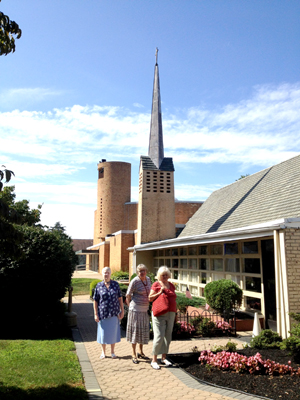 This is from a blog by the Rev. Larry Peters, a Lutheran pastor from Tennessee. He was commenting on the writings of Terry Mattingly.
This is from a blog by the Rev. Larry Peters, a Lutheran pastor from Tennessee. He was commenting on the writings of Terry Mattingly.
If churches want to reach millions of independent-minded young Americans they should learn a thing or two from craft brewers. . . . It’s time, he said, for “craft churches” that reach niche audiences.
This is an astute observation. Small churches have been serving niches for some time.
Our Ambassador visits reveal that most churches, large or small, serve a niche, but probably with little intent!
The largest church we visited (non-Lutheran and twice the attendance of the largest Lutheran church we visited) was a congregation of 25-35-year-olds.
Birds of a feather . . .
Small churches know their niche. Any intention of being all things to all people, though tempting, is out of reach. Even if people wanted that kind of ministry, (and most mission statements sound like they do!), finding leadership is daunting.
Church leaders often view small churches as failures—undesirable places for pastors to serve. Part of this is economics. All churches must rise to the same budget expectations, which in the modern era have priced many communities out of the faith business. Pastors assigned to small churches often view their role as care-taking, never bothering with outreach. Some even use the offensive term “hospice ministry.”
Perhaps it’s time to seriously examine the economics of church.
People will make their church home where they can see their offerings and efforts at work. They will neither participate nor attend a church where they do not feel fully welcome.
We at Redeemer know the difference between being welcome to attend church and being welcome to participate. Our bishop made it clear that we are not welcome to participate in SEPA Synod. She seized our property and pledged to close our church and reopen it under new leadership. She wrote to us that current members could attend this new, improved Lutheran church but former members would not be permitted to participate. She unilaterally denied us vote or voice. When we started visiting churches she sent a letter to pastors warning them!
How’s that for a welcome statement!
Redeemer was welcoming East African immigrants who were moving into our community—not just to use our building, which is the more common outreach approach, but to join their traditions with ours. We saw our unique niche ministry as adding to the mosaic of the greater church.
But SEPA was determined that one population had to die before a new population could be fully welcomed. As Bishop Burkat said, “White Redeemer must be allowed to die, black Redeemer . . . we can put them anywhere.” Control of assets was the objective.
Religion is not supposed to be a spectator sport.
Part of the problem with niche ministries is that few pastors are trained to serve niche populations.
Defining a niche (while recognizing the likelihood that niches will change every decade or so) may not be such a bad idea. It will take decades to recognize and train leaders to actively serve niche ministries and not view them as “hospice” assignments.
Another problem with niche ministries is that the “niches” that are most in need (the ones the Bible talks about), often can’t support them.
The true mission of the church is defeated by cost—at least with today’s budget and funding expectations.
Meanwhile, rejected and criticized by our denomination, Redeemer has created a niche ministry. You are visiting it now. Today, two months into our third year, we are reaching more people every week than the largest church in our denomination’s local region. We are just getting started.





